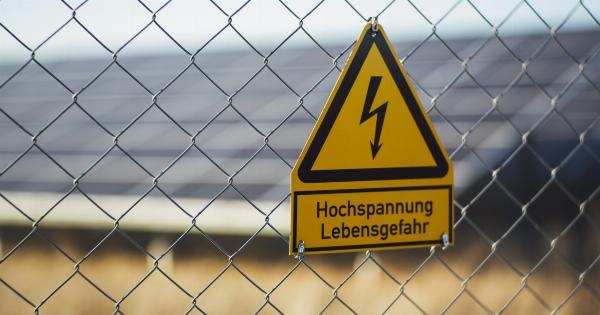Henna tattoos have been a popular form of temporary body art for centuries. Also known as mehndi, henna tattoos are made from a dye derived from the leaves of the henna plant, and are usually applied to the hands and feet.
Unlike permanent tattoos, henna tattoos are temporary and fade away naturally after a few weeks. Although henna tattoos are generally safe, they can cause side effects in some people.
Allergic reactions
One of the most common side effects of henna tattoos is an allergic reaction. Some people may be allergic to the dye used in henna tattoos, and may experience itching, rashes, and swelling in the affected area.
In severe cases, an allergic reaction to henna tattoos can cause blistering and permanent scarring.
Chemical burns
Another potential side effect of henna tattoos is a chemical burn. Some henna tattoos contain a chemical called para-phenylenediamine (PPD), which is used to enhance the color of the tattoo.
PPD can cause severe chemical burns if left on the skin for too long. In some cases, these burns can result in permanent scarring.
Infection
Henna tattoos can also cause an infection if they are not applied correctly. If the equipment used to apply the tattoo is not properly sterilized, it can introduce bacteria into the skin, which can lead to an infection.
Symptoms of an infection include redness, swelling, and pain in the affected area.
Damage to the skin
Henna tattoos can also cause damage to the skin if they are applied too frequently, or if the dye used in the tattoo is of poor quality.
Some henna tattoos contain additives such as silver nitrate or black hair dye, which can cause skin irritation and damage over time. It is important to use high-quality, natural henna dye to avoid these side effects.
Staining of the skin
Although henna tattoos are temporary, they can leave a lasting stain on the skin if applied incorrectly.
If the tattoo is left on the skin for too long, or if the skin is not properly prepared before the tattoo is applied, the dye can seep into the deeper layers of the skin, leaving a permanent stain. This is more likely to occur on areas of the body with thicker skin, such as the palms of the hands and the soles of the feet.
Allergic reactions to other substances
Some people may experience allergic reactions to other substances used in the henna tattoo process. For example, some artists use adhesives or glue to help the henna stick to the skin, and some people may be allergic to these substances.
Additionally, some artists may use essential oils or other fragrances in their henna paste, which can cause allergic reactions in some people.
Skin sensitivity
Henna tattoos can also cause side effects in people with extremely sensitive skin. People with eczema, psoriasis, or other skin conditions may be more likely to experience reactions to henna tattoos.
Additionally, people with thin or delicate skin may be more prone to skin irritation from henna tattoos.
Avoiding side effects
To avoid side effects from henna tattoos, it is important to choose a reputable artist who uses high-quality, natural henna dye. The artist should also use equipment that is properly sterilized to avoid introducing bacteria into the skin.
It is also a good idea to test the henna dye on a small patch of skin before getting a full tattoo, to check for any allergic reactions or skin sensitivity. Finally, it is important to follow the artist’s aftercare instructions for the tattoo to ensure that it heals properly.
Conclusion
Henna tattoos can be a beautiful and temporary form of body art, but they can also cause side effects in some people.
It is important to be aware of the potential side effects of henna tattoos, and to take steps to minimize the risk of reactions, infections, and skin damage. With the right precautions, henna tattoos can be a safe and enjoyable form of self-expression.






























